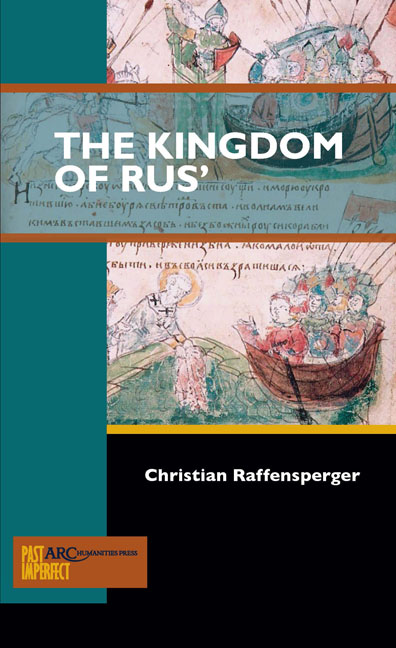Book contents
- Frontmatter
- Dedication
- Contents
- Acknowledgements
- Timeline of Events
- Introduction: The Problem with Names
- Chapter 1 The Place of Rus’ in Europe
- Chapter 2 The Historiography of the Translation of Kniaz’
- Chapter 3 Titulature and Medieval Rulers
- Chapter 4 What Was a Kniaz’?
- Chapter 5 Medieval Titulature and Rus’
- Chapter 6 Titles for Other Medieval Rulers in Rusian Sources
- Conclusion: Consequences and Resolution
- Further Reading
Chapter 4 - What Was a Kniaz’?
Published online by Cambridge University Press: 14 January 2021
- Frontmatter
- Dedication
- Contents
- Acknowledgements
- Timeline of Events
- Introduction: The Problem with Names
- Chapter 1 The Place of Rus’ in Europe
- Chapter 2 The Historiography of the Translation of Kniaz’
- Chapter 3 Titulature and Medieval Rulers
- Chapter 4 What Was a Kniaz’?
- Chapter 5 Medieval Titulature and Rus’
- Chapter 6 Titles for Other Medieval Rulers in Rusian Sources
- Conclusion: Consequences and Resolution
- Further Reading
Summary
The title left unexamined in the preceding chapter is the one to which the bulk of this book is devoted and that is the Slavic title “kniaz’” (князь). The basic functions of the kniazia in Rus’ (ruler, military leader, lawgiver, and tax collector) were the same as for most rulers throughout medieval Europe, and the varying power relationships were similar to what has already been shown in the examples of the last chapter. At different times in the eleventh and twelfth centuries there were kniazia subordinate to others bearing the same title, power relations between them being dependent upon personal power rather than titulature. Though this is complicated in our modern world, it seems to have been understandable, and broadly used, in the medieval world. Before embarking upon an examination of the usage of the title “kniaz’,” as well as the foreign titles for Rusian rulers (in chapter 5), it might be useful to have an understanding of the word itself, as well as an appreciation for what some of the functions of a kniaz’ were, based upon the primary sources, so that the most accurate construction of a title, and translation of both sense and meaning, can be achieved.
The word “kniaz’” comes from the Germanic root *kuningaz, the same root for such words as the German “Koenig,” the Anglo-Saxon “cyning,” Scandinavian “konungr,” and of course the modern English “king.” The root meaning of this word is simply “ruler,” or perhaps “chief,” and as the group of people (originally a clan or family) grew larger in size and their political organization grew in complexity, the responsibilities of the ruler may have changed over time as well. But the basic titulature stayed the same, from the same root, and at a simplistic level all of these titles break down simply to “ruler.”
The functions of a ruler grant us a view into the increasing specialization of the political process, but also allow for a classification of who the ruler was, and what an accurate title for that ruler might be. This section is by no means intended as an exhaustive examination of the role of the ruler in Rus’. The most recent, in-depth, work on that subject is in Russian, and was written just after the fall of the Soviet Union by A. P. Tolochko.
- Type
- Chapter
- Information
- The Kingdom of Rus’ , pp. 43 - 54Publisher: Amsterdam University PressPrint publication year: 2017



